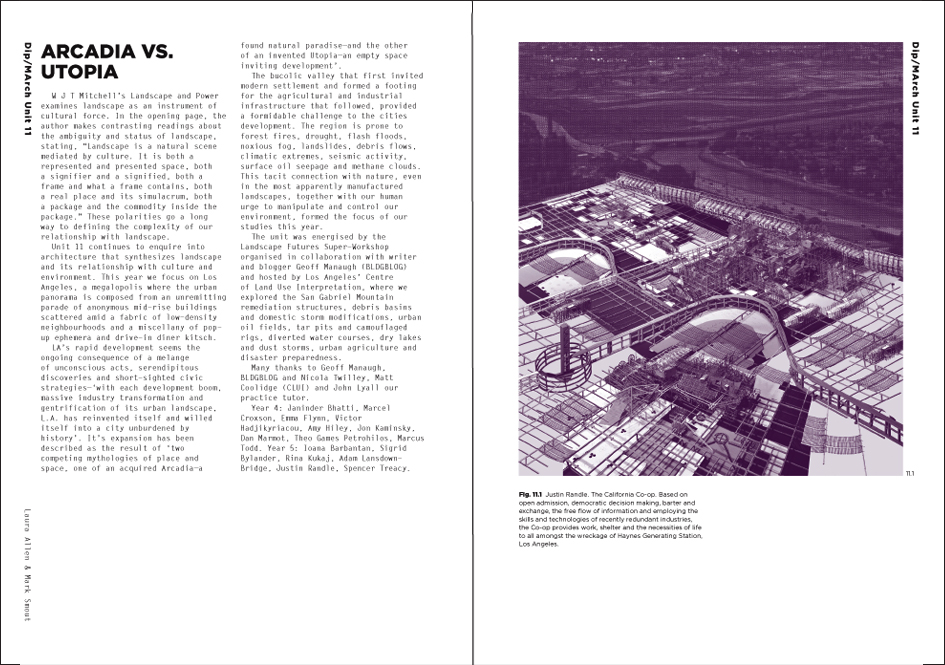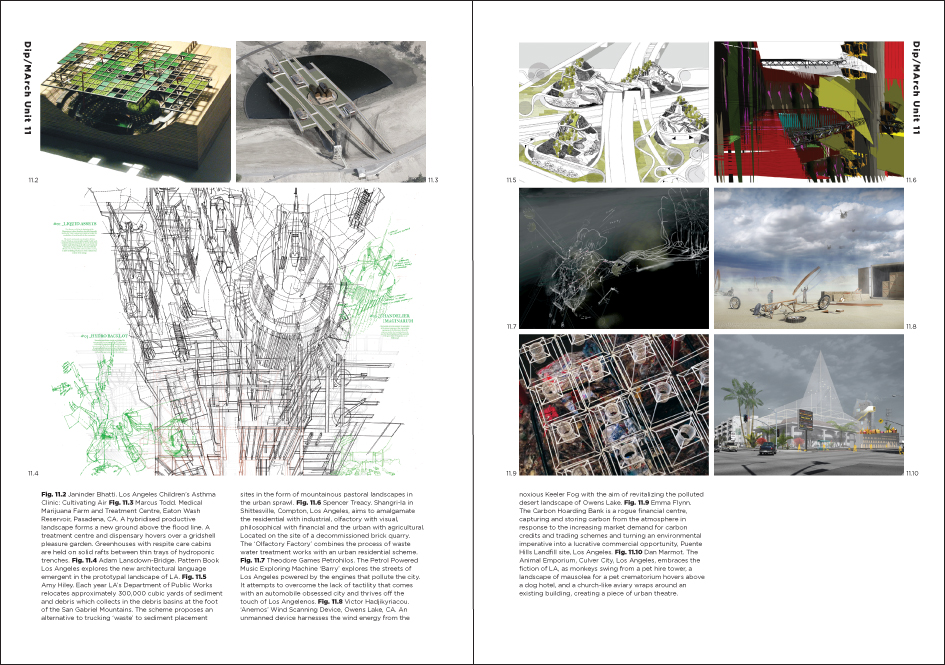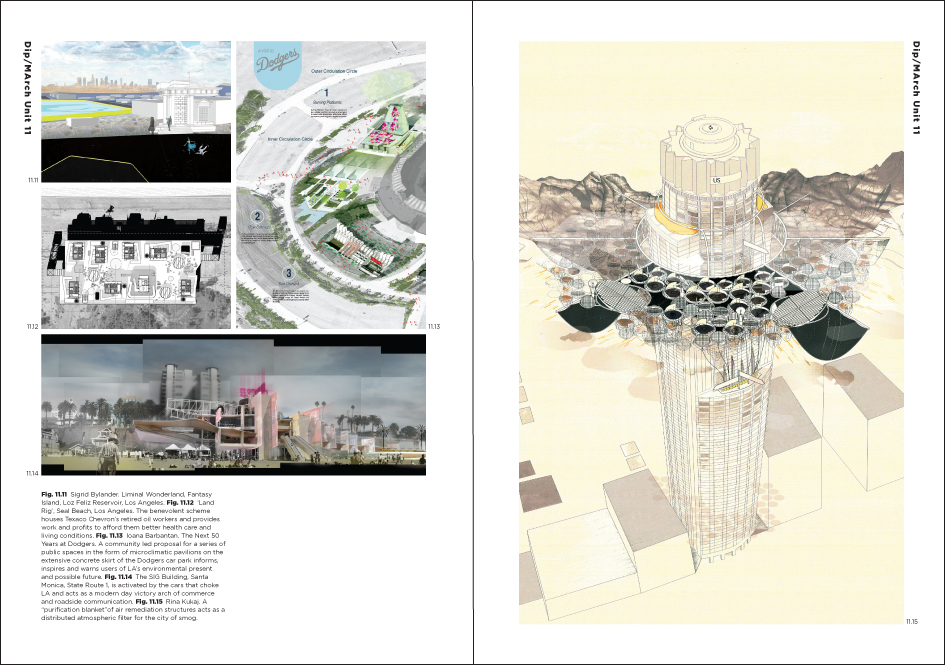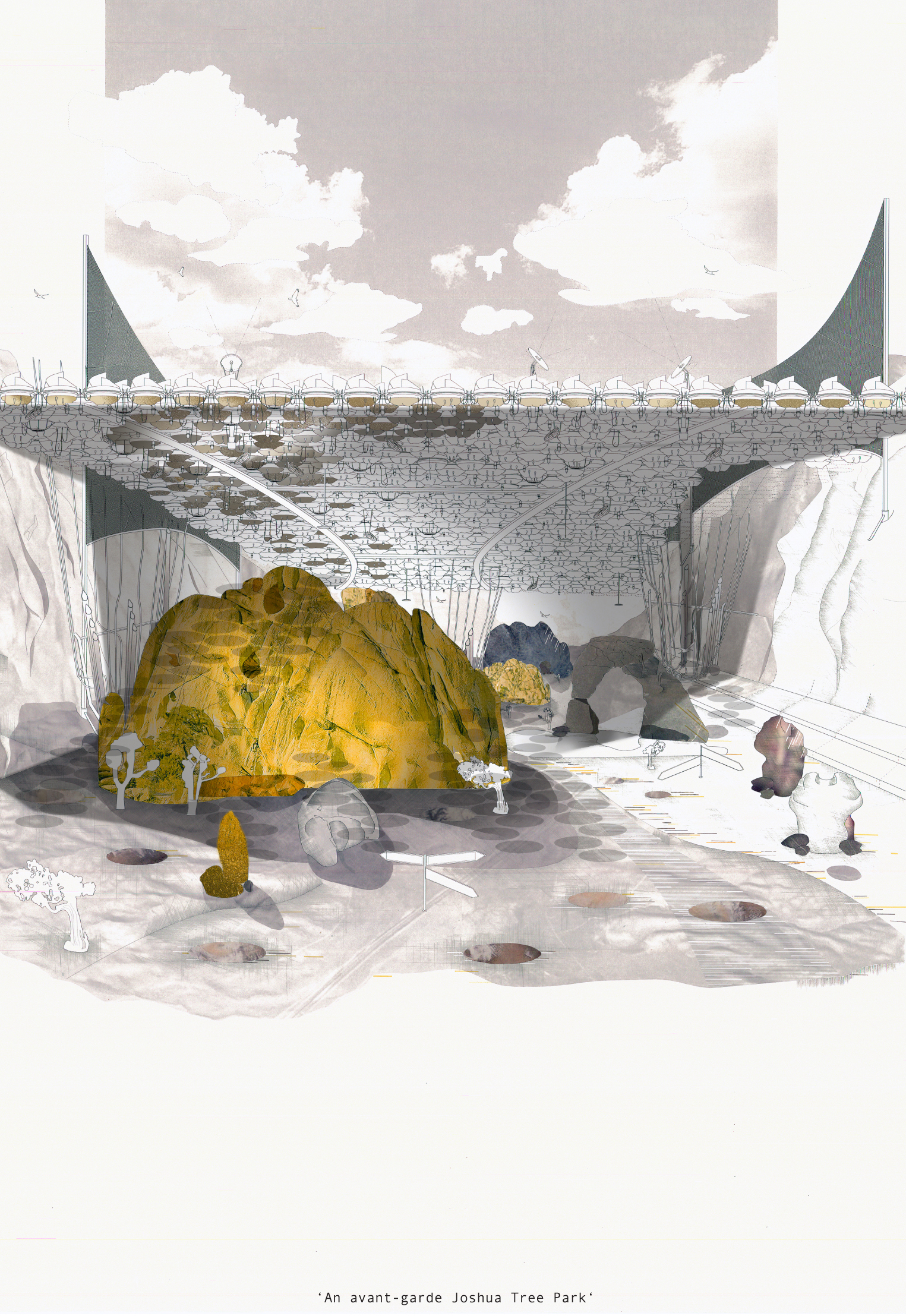



Los Angeles: Arcadia vs. Utopia
W J T Mitchell’s Landscape and Power examines landscape as an instrument of cultural force. In the opening page, the author makes contrasting readings about the ambiguity and status of landscape, stating, “Landscape is a natural scene mediated by culture. It is both a represented and presented space, both a signifier and a signified, both a frame and what a frame contains, both a real place and its simulacrum, both a package and the commodity inside the package.” These polarities go a long way to defining the complexity of our relationship with landscape.
Unit 11 continues to follow inquiries into architecture that synthesizes landscape and its relationship with culture and environment. This year we focus on Los Angeles, a megalopolis often unfavourably cast as an, ‘autopian’ sprawl.
The predominately horizontal urban topography stretches over 500 square miles, descending from the San Gabriel Mountains across what was once desert plain and river valley, to the sandy beaches of Pacific coastline. The urban panorama is composed from an unremitting parade of anonymous mid-rise buildings scattered amid a fabric of ramshackle low-density neighbourhoods and a diffuse miscellany of pop-up ephemera, and drive-in diner kitsch.
This decentralized scene is so unlike the familiar structural continuity of historic European cities or even the industrialized American metropolis that it invites stereotypes but continues to resist definition.
The rapid development of Los Angeles has been described as a ‘unique experiment’ although its development may seem more the ongoing consequence of a melange of unconscious acts, serendipitous discoveries and short-sighted civic strategies. In fact Los Angeles exhibits a radical approach to it’s own emerging identity—‘with each development boom, massive industry transformation, and gentrification of its urban landscape, L.A. has reinvented itself and willed itself into a city unburdened by history’.
4th Year Students
5th Year Students
